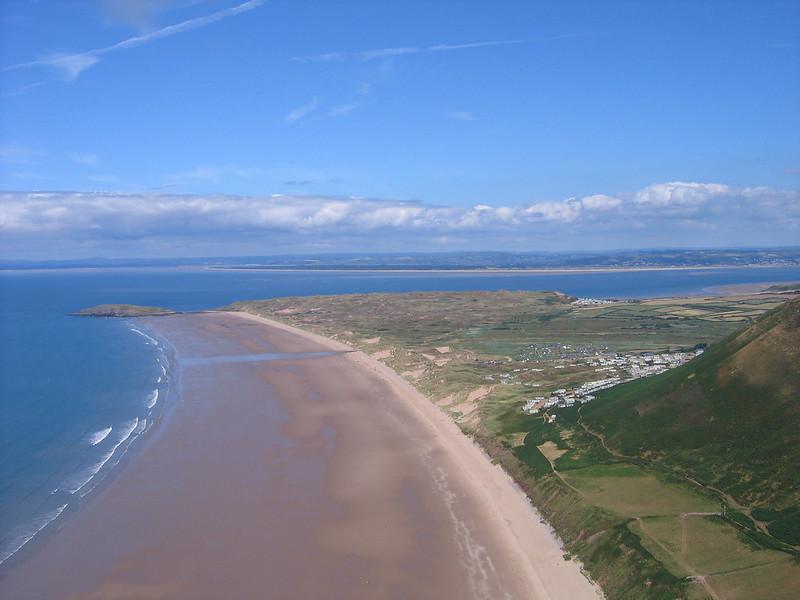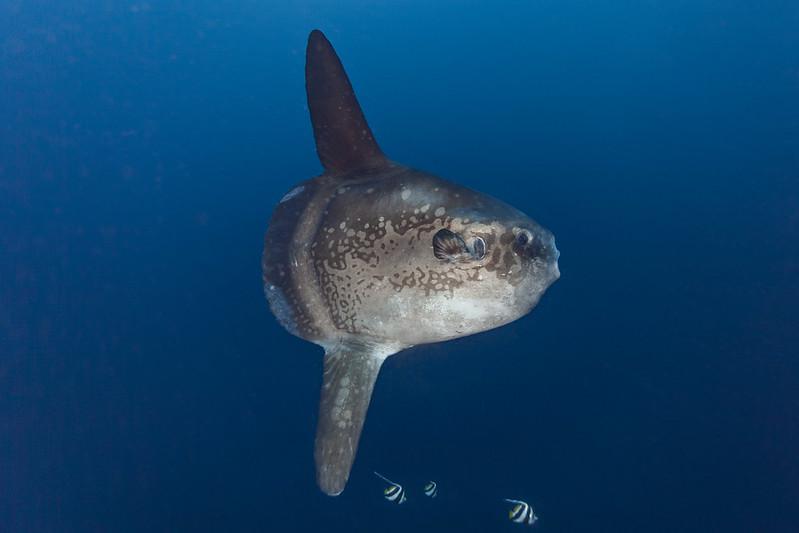Extensive Estuaries
On the South Wales coast, the rolling countryside landscape cuts inland, forming a large inlet known as Carmarthen Bay. The Carmarthenshire coastline surrounds the bay and provides a window into the past, with a variety of historic attractions that are the remnants of the Welsh struggle against the Normans. Two of the most impressive sights are Carmarthen Castle and Kidwelly Castle, both of which can be great for adding a touch of culture to your visit to Carmarthen Bay and the surrounding area.

The natural scenery in the region is also unlikely to disappoint, with some fantastic sea views and estuaries which cover hundreds of square miles. The Loughor Estuary in particular is a point of interest, as the area empties of water almost completely at low tide, exposing large sections of sand and mudflats. This provides a magnet for birdlife and is also notable for supporting a thriving cockle industry. The entire stretch of Carmarthenshire coastline is blessed by having a coast path, which makes it a fantastic place for walkers. And with the waters of Carmarthen Bay dominating the landscape, the area is home to many marine species that are sure to heighten the experience of visiting this part of Wales.
An Unlikely Visitor
One of the species to look out for in Carmarthen Bay is a lesser known ocean giant, one that only visits the Welsh coast during the summer months. The Ocean Sunfish – also known as the Common Mola – is in many ways a rather odd-looking creature. Its appearance resembles a fish’s head with a short tail, and its body is flattened laterally. Sunfish are surprisingly large animals, with adults weighing anything up to 1,000kg. This makes them the heaviest bony fish species in the world. With a fin-to-fin length averaging 2.5m, Sunfish can be a spectacular sight and will often bask at the surface of the ocean, allowing lucky wildlife watchers to get great views.

Usually, this behaviour is done to warm the fish up before it dives deep down into colder waters to hunt for jellyfish, squid and fish larvae. While Sunfish are widely known for being slow, graceful creatures that drift through the seas, they can actually move quite quickly when they need to, even having the ability to leap out of the water when trying to escape predators. The species spends most of the year in warm, tropical waters, but chooses to visit the British coast between June and September. Top tip for spotting Sunfish in Carmarthen Bay: Keep an eye out for their tall fins breaking the surface of the water.
International Importance
As well as providing a haven for large, ocean-going fish, Carmarthen Bay supports a range of other wildlife species, in part thanks to its estuaries. The rich sediments that make up the mudflats in these estuaries are extremely fertile and host many invertebrates, as well as providing habitat for the growth of seagrasses. In turn, this leads to a large availability of food, attracting wildfowl and other marine species. One of the more notable animals that can be seen making the most of what Carmarthen Bay has to offer is the Otter. Keep an eye out for this species hunting around some of the quieter, rocky headlands.
Birdwatching opportunities in Carmarthen Bay are excellent all year-round, with the spring breeding season being especially good for seeing Lapwing and Shelduck. Both species have a tendency to engage in noisy courtships around this time of year and the sound can be a wonderful backdrop to a walk along the Carmarthenshire coast. In the summer months, their calls will be replaced by the sounds of warblers and skylarks. A number of rivers flow into Carmarthen Bay and some of these are home to Water Voles – a secretive mammal species known for living in secluded river banks. Be sure to watch out for these small rodents as you pass waterways, seeing one will add a touch of magic to a destination that is already rife with wildlife attractions.
